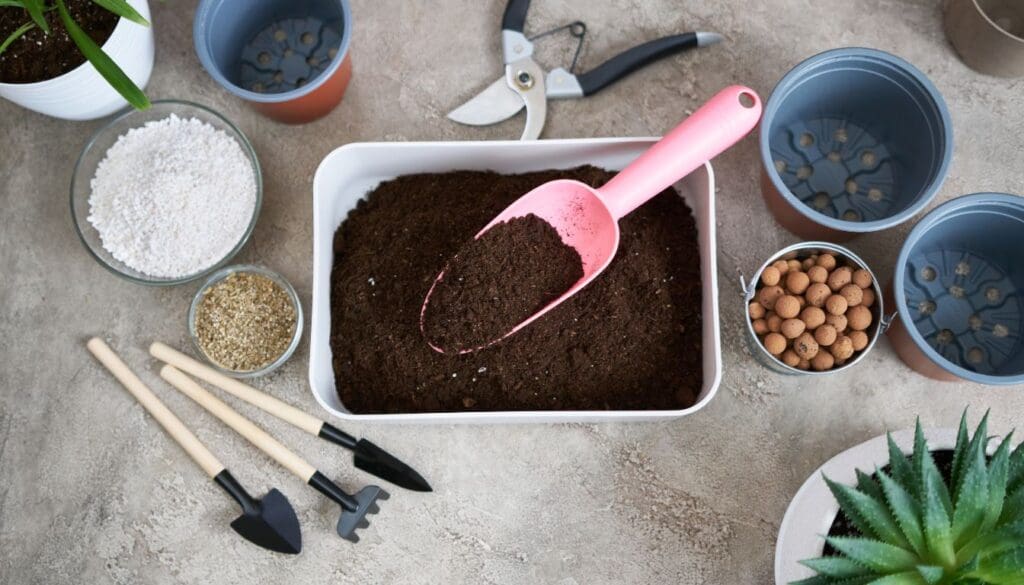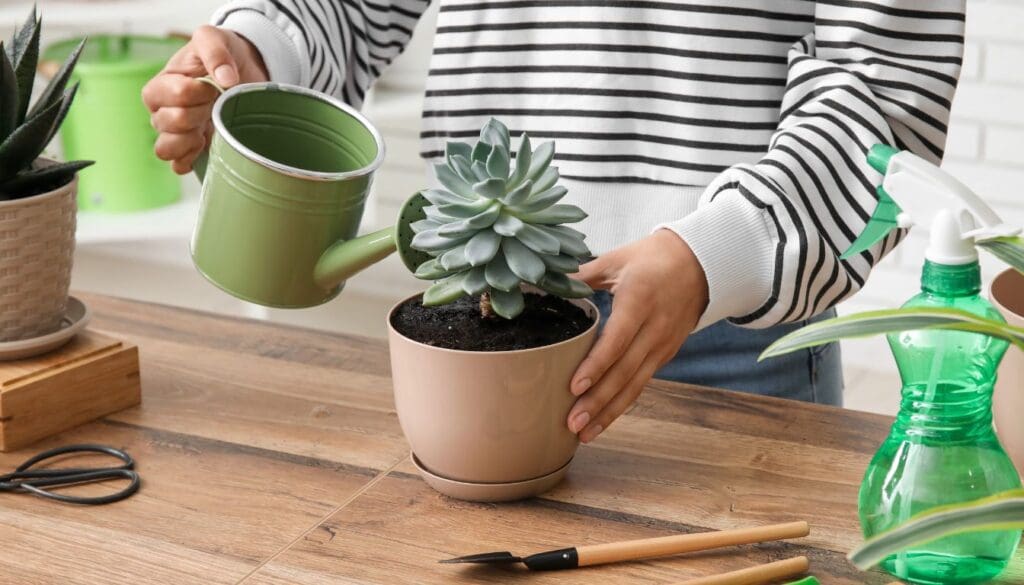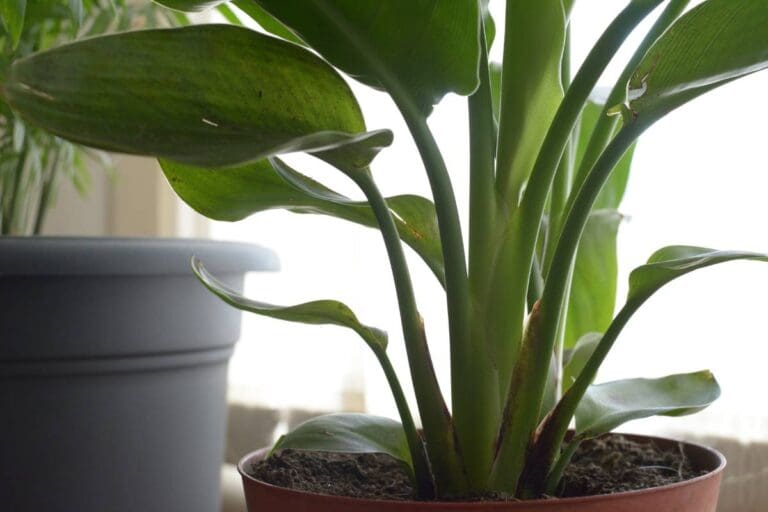4 Things to Know Before Repotting Plants in Cold Months
I really enjoy taking care of my plants all year, but honestly, repotting in colder months can be a bit of a puzzle. The weather and growth cycles just aren’t what they are in spring or summer.
Knowing what to watch for before repotting in the cold can seriously help your plants avoid stress or damage.
Whenever I’m thinking about a winter repot, I pay extra attention to temperature, soil, water, and the type of pot. It’s funny how little details like these can make a big difference in keeping plants happy until spring rolls around.
Please note: Simplify Plants is reader-supported. As an Amazon Associate, I earn from qualifying purchases made by our readers with no extra cost added to you all! Some links in the post are affiliate links and I get a commission from purchases made through links in the post.
1) Avoid repotting when temperatures drop below 50°F (10°C)

I always check the forecast before moving a plant to a new pot. Cold air slows root growth, and that really makes it tough for the plant to settle into fresh soil.
If it’s below 50°F (10°C), I just wait. No point risking it.
In cooler weather, the soil hangs onto moisture longer. Wet soil plus cold roots? That’s a recipe for rot, and nobody wants that.
I’ve noticed that plants use less energy when it’s cold. Repotting now can stress them out, since they’re not really in the mood to grow.
I’d rather let them rest and save repotting for spring or early summer. Unless I absolutely have to, then I keep the plant indoors where it’s warm and cozy.
Consistent warmth really helps roots adjust and keeps shock to a minimum. It’s a small thing, but it matters.
2) Choose a well-draining potting mix to prevent root rot

I always go for a well-draining potting mix when I repot plants. Extra water sitting around is just begging for root rot.
Healthy roots need both water and air, so I look for mixes with perlite, sand, or bark. These ingredients keep the soil light and let water flow through.
Heavy garden soil? Not for me. It’s just too dense and holds too much water.
If I’m unsure, I’ll water a bit and see how fast it drains. If it runs through in a few seconds, that’s the good stuff.
For succulents or plants that like it dry, I pick a mix with extra sand or grit. Makes life easier for both of us.
3) Water plants lightly before repotting to reduce stress

I always give my plants a light drink a few hours before repotting. It softens the soil and helps the roots slip out without snapping.
Slightly damp soil is just easier to work with. Dry soil can tear roots, but soaking wet soil is a mess and weighs the plant down.
I try to avoid overwatering before repotting. Moist, not soggy, soil is the sweet spot.
A little water keeps the roots flexible and helps the plant settle faster. It’s such a simple thing, but it really makes the whole process smoother.
4) Use pots with drainage holes to avoid waterlogging

I never skip drainage holes when I repot. Without them, water just collects at the bottom and roots end up sitting in soggy soil.
That’s just asking for root rot, and that’s tough to fix.
In winter, plants don’t drink as much, so the soil stays wet longer. Good drainage is even more important now.
If I fall in love with a pot that doesn’t have holes, I’ll use it as a cover. I just pop a smaller pot with drainage inside, so I get the look but not the risk.
Sometimes, holes get blocked by roots or soil. I put a little mesh or a coffee filter at the bottom to keep things flowing but not messy.
Using pots with real drainage just gives my plants a healthier place to grow, especially when it’s cold and damp outside.
Understanding Plant Dormancy
When it gets cold, most of my plants slow down. They just don’t use as much energy, and I have to tweak my care a bit.
How Cold Affects Root Growth
Colder temps mean roots grow way slower. The soil stays chilly, so roots aren’t taking up water or nutrients like they usually would.
Even if the top looks fine, the roots might not be doing much at all.
If I repot into a bigger pot in winter, the roots often can’t fill the new space fast enough. That can leave soil soggy and lead to root rot.
Some plants go into a semi-dormant state with barely any root activity. I water less and skip the fertilizer.
Too much fuss at this point can backfire.
To keep roots happy, I put the plant somewhere stable, away from drafts or sudden cold. Even a small temperature swing can stress out slow roots.
Signs Your Plant Is Resting
I can usually spot a resting plant when growth just slows or stops. No new leaves, or they just hang out the same size for ages.
Some plants will drop a few leaves to save energy.
Another giveaway? The plant needs water less often. Soil stays damp longer because roots aren’t thirsty.
If I stick to my usual watering schedule, I’ll probably overdo it.
Sometimes I see lighter color or smaller leaves before the plant pauses growth. It’s not a bad sign—just the plant taking a break.
I’ve learned to expect these changes and adjust my care. Letting plants rest now means they’ll bounce back when it’s warmer.
Minimizing Stress During Winter Repotting
I try to keep things as calm as possible for my plants, from timing to how gently I handle them. Little choices here really matter for a smooth recovery.
Choosing the Right Time of Day
I always repot during the warmest part of the day, usually late morning or early afternoon. It’s just less of a shock for the plant.
Too early, and the air’s still cold from overnight. Too late, and it’s cooling down again.
I also make sure there’s plenty of light, but not direct sun. Direct sun right after repotting can be a bit much, and dim rooms slow recovery.
Here’s what I keep in mind:
| Time of Day | Conditions | Why I Choose It |
|---|---|---|
| Morning | Cooler, dim | Too cold, not ideal |
| Midday | Warm, steady | Best for repotting |
| Evening | Cooling down | Plant won’t adjust well |
Timing really gives my plant the best shot at staying stable through the winter.
Gentle Handling Techniques
I go slow and steady with the roots—no yanking or shaking. That just breaks the fine roots, which are super important.
I loosen the soil with my fingers, letting the roots separate on their own.
When moving the plant, I support it at the base and cradle the root ball. Keeps everything together and avoids bending or snapping stems.
I only trim roots if they’re damaged or rotting. Cutting too much, especially in winter, can really set the plant back.
Room-temperature soil helps too. Cold soil can shock the roots, but warm soil feels more familiar.
Being gentle just helps the plant settle in with less drama.
Frequently Asked Questions
I try to pay attention to timing, soil, pot size, plant type, and whether I’m working with indoor or outdoor plants. Temperature and gentle handling are huge for winter repotting.
What’s the best time of day to repot plants during the colder season?
I prefer late morning or early afternoon. By then, things are warmer and it’s easier on the roots.
Can I use the same potting soil when repotting in winter?
I skip old soil and go for fresh, well-draining potting mix. It’s safer and gives the plant a boost.
How do I know if my plant needs a bigger pot during the colder months?
If roots are circling the bottom or poking out drainage holes, or if the soil dries out super fast, it’s probably time for more space. Here’s a handy guide.
Are there specific plants that shouldn’t be repotted in winter?
I avoid moving dormant plants in winter. They’re not growing, so repotting just stresses them out.
What precautions should I take when repotting a plant in cold weather?
I keep the room above 50°F (10°C), water lightly before repotting, and always use pots with drainage holes. That’s my go-to routine for safer winter repotting.
How does indoor repotting differ from outdoor repotting in the winter?
When I repot indoors, I don’t have to stress about cold drafts sneaking in or soil turning icy.
Outside, though, it’s a different story—I’ve got to watch out for sudden temperature swings and make sure the plant stays safe from frost.
Recommended Garden Supplies
| Product Image | Our Recommended Gardening Supplies | Check Offers! |
|---|---|---|
Top Top
Top
Top
Top
Top
Top
Top
Top | rePotme Houseplant and Tropical Classic Potting Soil Mix | Check Offer On Amazon |
 Top
Top
Top
Top
Top
Top
Top
Top | Espoma Organic Indoor Plant Food | Check Offer On Amazon |
 Top
Top
Top
Top
Top
Top
Top
Top | GooingTop LED Grow Light 6000K Full Spectrum Clip Plant Growing Lamp | Check Offer On Amazon |
 Top
Top
Top
Top
Top
Top
Top
Top | Soil Moisture Meter | Check Offer On Amazon |
 Top
Top
Top
Top
Top
Top
Top
Top | Govee Hygrometer Thermometer, Bluetooth Enabled! | Check Offer On Amazon |
 Top
Top | LEVOIT Humidifiers for Large Room(Best For Plants) | Check Offer On Amazon |
 Top
Top
Top
Top
Top
Top
Top
Top | Upgraded DIY Automatic Drip Irrigation Kit, 15 Potted Houseplants Support | Check Offer On Amazon |
 Top
Top
Top
Top
Top
Top
Top
Top | Stainless Steel Heavy Duty Gardening Tool Set | Check Offer On Amazon |
 Top
Top
Top
Top
Top
Top
Top
Top | Bonide Insecticidal Soap | Check Offer On Amazon |
 Top
Top
Top
Top
Top
Top
Top
Top | Bonide 32 oz Spray Neem Oil for Organic Gardening | Check Offer On Amazon |
 Top
Top
Top
Top
Top
Top
Top
Top | Garden Safe Fungicide | Check Offer On Amazon |






